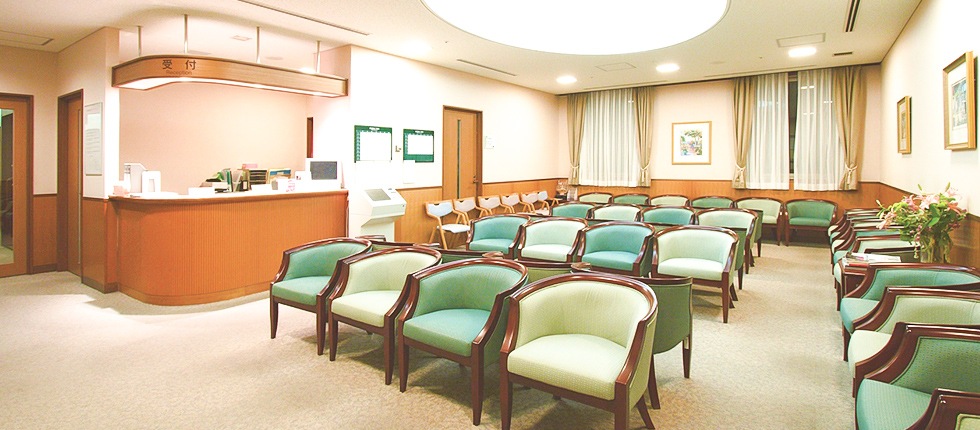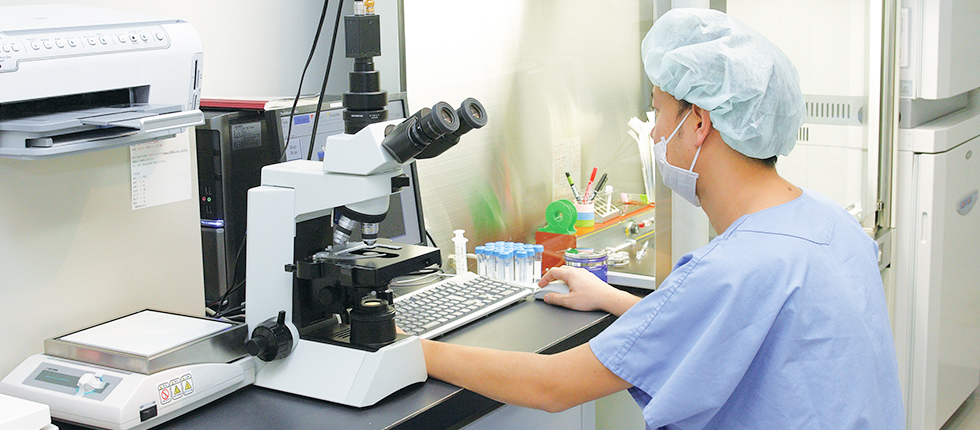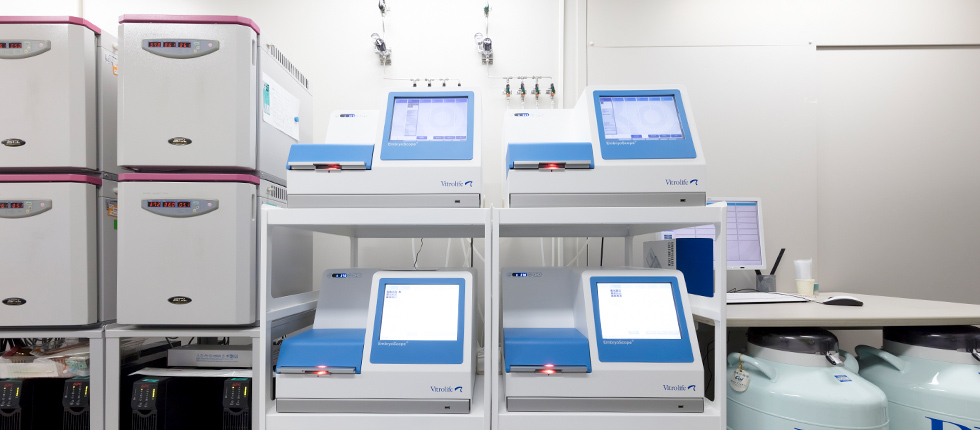Women's Medical Center/Human Reproduction & Gynecologic Endoscopy
Reproductive medicine, infertility treatment, and endoscopy
“By Appointment Only” for the first-time patients to the division.
Please call us to make an appointment.
TEL: 03-3402-3151 Mon - Sat: 2:00 pm to 5:00 pm, except national holidays
Information
Overview
The Human Reproduction & Gynecologic Endoscopy has infertility treatment specialists with one of the best technical abilities and performance records in Japan, and utilizes a system where test and treatment can be conducted using the latest equipment.
Infertility is a problem believed to be currently faced by one in ten couples in Japan. The causes of infertility are very diverse, and it is thus necessary to conduct appropriate checks, and then provide effective treatment after fully looking into what the underlying causes are.
We provide leading-edge infertility treatment tailored to symptoms of individual patients in an empathetic manner, in full consultation with patients.
Infertility Test at Sanno Hospital
- Female
-
- General infertility test
- Laparoscopy
- Salpingoscopy
- Hysteroscopy
- Ovarian reserve test
- Male
-
- Semen test
- Sperm insemination capacity test
- Male endocrine test
- Varicocele test
- Male infertility-related genetic test
General infertility tests
Infertility may be brought about by a variety of factors. When establishing a course of treatment, it is essential to accurately identify infertility factors. A number of tests are conducted to that end:
1.Ovulatory factors
Follicular growth and ovulation are checked by ultrasonic diagnostics, and an endocrinological test is carried out by measuring circulating hormones. Anti-Mullerian hormones (AMH), an important marker of ovarian reserve, are also measured.
2.Fallopian tube factors
The patency of fallopian tubes and the presence or otherwise of adhesion within the pelvis are examined by uterosalpingography.
3.Male factors
Various sperm-related parameters, such as sperm concentration, the motility rate and speed, are measured using the computer assisted sperm analysis (CASA). In addition, for more thorough tests, it is possible to comprehensively judge the insemination capacity of sperms by such tests as the Kruger's Strict Criteria and Swim-up Test.
4.Immunity factors
Immunological infertility is examined using postcoital testing and by measuring antisperm antibodies.
Male Infertility Test
In addition to male infertility tests mentioned above, endocrine tests, ultrasonography and azoospermia-related genetic test, and so on are carried out.
Male infertility medical specialists conduct optimal tests in accordance with conditions of individual patients to find appropriate treatment.
Endoscopic Test (Laparoscopy, Hysteroscopy, Salpingoscopy)
When general infertility tests alone are not sufficient, endoscopic tests are conducted. Laparoscopy is conducted under anesthesia, with an endoscope inserted into the abdominal cavity through a small 3mm diameter hole, in order to thoroughly observe the conditions of the uterus, ovaries, fallopian tubes, and the peritoneum. It is also possible to examine the patency of fallopian tubes by chromotubation. Hysteroscopy can be conducted as an outpatient procedure. A fine fiber scope is fed into the uterine cavity to search for polyps and uterine fibroids or the adhesion within the uterine cavity.
The above tests may be conducted individually, but as a more comprehensive test, an integrated endoscopic examination (triple scope examination) is also conducted with the addition of salpingoscopy (wherein, during laparoscopy, a fine endoscope is inserted into the fallopian tube to observe the condition inside the fallopian tube) to the laparoscopy and hysteroscopy.
Infertility Treatment/Reproductive Care at Sanno Hospital
Treatments
Artificial insemination, in vitro fertilization and embryo transfer (IVF-ET), microinsemination or intracytoplasmic sperm injection (ICSI), testicular sperm extraction (TESE), embryo tubal replacement (ETR), and so forth.
In Vitro Fertilization and Embryo Transfer (IVF-ET)
IVF-ET is a treatment where an egg is removed from a developed follicle, fertilized with a sperm and returned to the uterus. From the onset of menstruation, oral or injected medication is used to stimulate the ovary. There are a number of procedures that may be used for this, such as the long method, antagonist method, short method, mild method, and friendly method. We deal with all of these, and work to ensure an appropriate method is followed in accordance with the conditions of individual patients. In order that the timing of the embryo transfer is adequate, the number and condition of suitable embryos are monitored, and the procedure is carried out three or five days (blastocyst stage) after the extraction of the egg. In vitro fertilization is carried out on an outpatient basis, and anesthesia during the egg extraction is the responsibility of specialized doctors.
Microinsemination (ICSI)
When the normal fertilization process is hampered because of problems with the number or motility of sperms, or problems with the zona pellucida or cell membrane of the ovum, we conduct microinsemination (ICSI) that uses an ultrafine pipette to inject sperms into an ovum cell. We have both the latest equipment and adept skills required to conduct this technique precisely and smoothly.
Testicular Sperm Extraction (TESE)
When the spermatogenesis of the testis is not sufficient, or the passage of sperms is blocked, no sperms can be detected in ejaculated semen. In these cases, we conduct microinsemination (ICSI) by directly extracting sperms from the testis in cooperation with urological physicians.
When indicated, we also conduct microdissection TESE (MD-TESE) for extracting sperms by microscopically magnifying the testis.
Embryo Tubal Replacement (ETR)
With in vitro fertilization (IVF) and microinsemination (ICSI), the embryo transfer is normally conducted through a catheter inserted from the cervix. However, when this procedure is not possible for some reason, or unsuitable, laparoscopy is used for the transfer into the fallopian tube. This procedure is called the embryo tubal replacement (ETR). With this procedure, the transferred embryo is returned to the correct place in accordance with its stage of development. Thus, it can be considered close to the natural process.
Endoscopic surgery
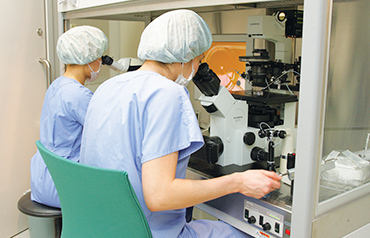
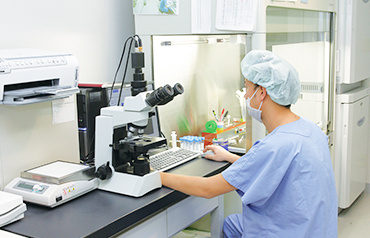
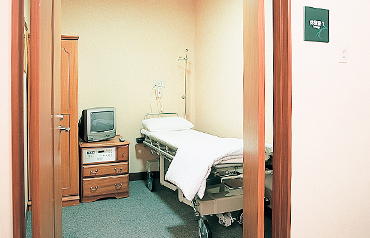
The core of infertility treatment is the so-called assisted reproductive technology (ART), centering on in vitro fertilization and embryo transfer (IVF-ET). During the examination and treatment of infertility, fibroids, ovarian cysts (a type of tumor) and so on are sometimes discovered.
Endometriosis, which has been increasing in recent years, frequently brings about adhesion in the pelvic cavity, and is also one of the causes of infertility. Against these conditions, it is not necessarily effective to simply repeat techniques such as artificial insemination and in vitro fertilization.
Surgical removal of fibroids and cysts and synechotomy would be required. When doing so, endoscopic procedures are put to use. It had been necessary to cut open the abdomen previously, but now, the same procedure can be carried out with the smallest size of incision. The time in the hospital is short, and the patient can return to everyday life sooner.
Laparoscopy, where an approach is made from the abdominal wall to the abdominal cavity, and hysteroscopy, where an approach is made from the cervix to the uterine cavity, are both used in endoscopic surgery. We stand ready to conduct both of them. The former is carried out for fibroids and ovarian cysts, as well as adhesion in the fallopian tube or within the pelvic cavity, while the latter is suitable for polyps on the endometrium, fibroids of the uterus under the mucous membrane, and so on. For both of these procedures, our skilled staff regularly achieves good results.
As the same staff is engaged in the diagnosis and treatment in a seamless combination of assisted reproductive technology and endoscopic surgery, synergy effects in both areas can be expected.
Treatment cost
Questionnaire
For the first-time patients, please bring this “Questionnaire” with you:
You can download it online.
